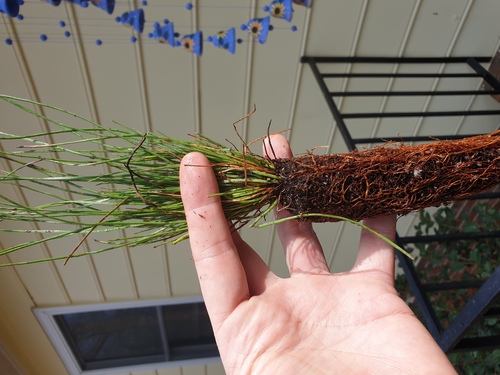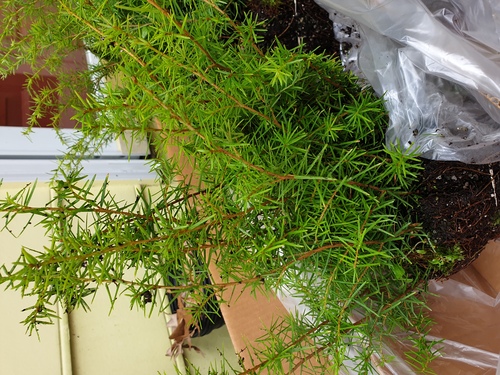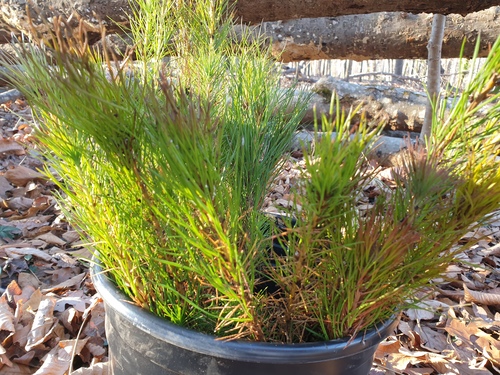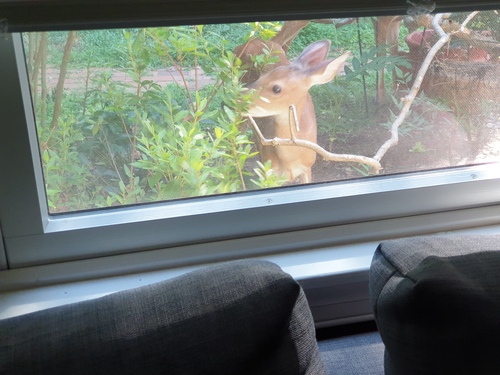Building Forests
A first memory: we're leaving the big city under a heat warning and three-digit, mid-summer temperatures. We cross into North Carolina just as a thunderstorm sweeps down across the forests and drenches everything in relief. The forests: they're everywhere, green and dark and lovely, thick with shadows and a thousand shades of green, rich with the smell of summer rain.
A second memory: it's our first week, the boxes are still heaped in corners; we are finding our bearings. In the early morning sun, an enormous buck dozes quietly at the forest edge behind our house. He's magnificent, stately, majestic, and offers some sort of welcome to this new, sylvan lifestyle. The White-tailed deer, Odocoileus virginianus.
Since then, of course, the deer have been a regular fixture of our life. They return daily in sixes and eights, sometimes troupes of marauding bucks, sometimes packs of quiet does with their fawns trailing, sometime mixed. Mornings, evenings, they creep across the hillside or skulk along the shadow margins. In the spring we stumble upon spotted fawns cached behind hardwoods; on early summer mornings we find flattened spots in the forest where they've bed down. We see them most often just before sundown as they emerge from denser wood and browse their way silently down through the neighborhood.
But these two magic moments of course exist in a delicate balance, and often conflict. Months after arriving, I waded straight into it.

I soon noticed the gorgeous little patch of forest outside my window had no understory to speak of, no greenery lower than approximately 7' off the ground. Older Oaks and Hickories seemed to be healthy enough, but everything smaller was struggling. Turned out, the deer I love were eating the forest I love, preventing any new growth from forming. But North Carolina is the original home of America's forestry programs, and the NC Forestry department sells seedlings each winter. I decided to plant some of the magnificent pines that make these forests so lovely. And down a rabbit hole of learning I tumbled.
Over the next three years I would plant over 500 seedlings: Longleaf Pine, Shortleaf Pine, Carolina Hemlock, Black Locust, Loblolly Pine. But I've got very little to show for it. The soils are heavy with clay and poorly drained, and nutrient poor. Summer rains fall sporadically, leading to dry spells tough for seedlings just putting out roots. But by far, the biggest issue was the deer, who chomp everything worth chomping.

I've come to the conclusion that Whitetailed Deer graze and browse just about everything within reach, even things they don't like. It's nearly impossible to get new seedlings started when they are soft with new growth and right in the chomping zone. I've learned a few other things by observing how the deer mow their way through a forest:
- Deer seem so require several pounds of fresh greenery every day, every single one of them.
- They have no apex predator, now that we've largely eliminated wolves and coyotes in their space. Wolves and coyotes don't stand a chance of being permitted in America's forested suburbs thanks to their penchant for eating the occasional house pet. So the deer are free to roam and reproduce.
- They can produce more than one litter of fawns per year when they are well-fed.
- They have routes that they follow through the fields and forest, so that one little seedling will be grazed repeatedly while another a few feet away goes unnoticed.
- They eat plants like teenagers eat skittles strewn across the floor. Hey, a skittle! Hey, a skittle! They seem to bite things they don't like, only to return later having forgotten it to taste it once again.
- They seem to crave variety, or just browse as they meander on their browsing routes. There are plenty of other green plants around, starting with a field full of wildflowers just up the hill. But here they go, meandering through the forest trying to nibble the very few green leaves left within reach. Just down the hill is a whole hedge of things they like: no matter.
- The greatest damage arises from the fact that deer eat by clipping the tops of growing plants, and they like the young, new growth best. It means young plants struggle to take hold. Pine seedlings' topmost point is called the apical meristem, which is the area of a seedling that controls upward growth, creating new tissue as it is pushed skyward. Deer clip this, bringing seedling growth to a halt while the plant reorganizes. Often, the seedling responds by pushing new shoots out the size, leading to fractured, frenetic plants. If deer ate any other part of the plant, the seedling would grow skyward relatively unmolested.
I've taken to caging my seedlings with chickenwire cones I created myself. I'm looking into taller fences, barriers. I've learned you can buy gallon containers of wolf urine to discourage deer. But I've also learned this fight grows expensive fast, and is an uphill battle: if you take the cages off when the trees are 6' high the deer can still easily reach the green leaves and strip your trees clean. Meanwhile, the deer knock over my cages in the night. When I stake them firmly into the ground, I find them trampled.

I found myself thinking, this damned species is doomed to destroy the very habitat that sustains it, they are too damned numerous, breed too quickly, and are too hungry. They have no apex predator to keep their population in check. But then I think, surely there's another species on earth of whom the very same thing could be easily said. Meanwhile, as the earth hurtles towards its next solstice, I prepare to order a new batch of seedlings. This time, I'll cage them all and fill this forest with green. Just wait. Building forests requires patience and zen.

Hey! Come plant more trees. The last ones were delicious!
Trackbacks
The author does not allow comments to this entry

Comments
Display comments as Linear | Threaded